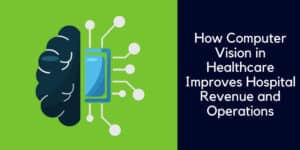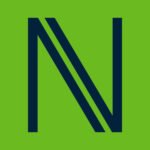What’s inside:
Precision billing is a key financial driver for optimized healthcare performance.
Inefficient processes can hinder revenue generation and disrupt operations.
This blog looks at the importance of charge capture in operating and procedural rooms and discusses how new image recognition and AI technology are changing the game.
It’s competitive out there! Healthcare performance needs to be optimized if providers are to survive, and even thrive.
To achieve this goal, many healthcare organizations are taking steps to improve the accuracy of their RCM and billing. This requires a careful review of the systems and processes in place, looking at inefficiencies that can compromise optimum reimbursement. One of the issues that many hospitals and surgery centers are discovering is that their documentation process for surgical utilization is inefficient and compromises efficient revenue cycle management. One of the underlying causes of this problem is the prevalence of inadequate tools in the OR and procedure room setting.
So, let’s discuss the issue of charge capture at the point of care and look at how new healthcare technology can make a significant impact on the financial health and operational efficiency of healthcare organizations.
Streamlining Charge Capture for Accurate Billing
The clinical reporting of items is just one aspect of surgical documentation. The point of care is a vital data capture point that underpins operational, administrative and management activities. In short, surgical data is business data.
Perioperative nurses are responsible for recording the products used in surgery and making sure that all core hospital systems receive this vital data.
Ensuring that all systems receive timely, accurate data is not always that simple.
Systems that aren’t interoperable
In some organizations, there is a lack of interoperability between hospital systems and nurses are required to input duplicate data into several systems, which is time consuming and error prone.
Ideally hospital systems should be interoperable so that just one set of data can be captured and shared.
The three main uses of product utilization data are for up-to-date clinical records, responsive inventory management and accurate, timely billing.
Without complete and correct OR utilization data, the hospital cannot run efficiently.
The limitations of existing POU data capture technology
Traditional methods of capturing and recording the implants and products used in surgery often have limited success in the complex surgical setting. The two most common methods of data capture at the point of care are barcode scanners and manual entry. Both have serious limitations that result in documentation difficulties, partial data and missing items.
One of the stumbling blocks in the process is the reliance on the Item Master for product identification. The system needs to find a match before the item can be entered.
This process is not straight forward. With hundreds of thousands of listings on the Item Master plus ongoing item coding changes, product substitutes and new suppliers, maintaining the source of truth is an arduous task and most healthcare organizations are continually playing catch up. The supply chain disruptions of recent years have led to a call for greater supply chain resilience in terms of broadening the supplier base and product list. This has made maintaining the Item Master an even harder task.
A mix of inadequate tools, system deficiencies and longwinded workflows commonly results in tedious post-surgery admin and reconciliation.
The impact of inefficient charge capture at the point of care
Outdated POU data capture tools and cumbersome manual processes hinder nurses’ ability to document surgical items and capture charges accurately.
The financial and operational repercussions of lack of data integrity at the point of care include:
| Issue | Reason |
| Missed charges: | In the absence of streamlined systems, nurses may unintentionally omit charge capture for essential items, leading to revenue leakage and potential financial losses. |
| Billing errors and delays:
|
Manual reconciliation and data entry increase the likelihood of errors, resulting in delayed or incorrect billing, denied claims, and subsequent revenue cycle bottlenecks. |
| Compliance risks:
|
Incomplete or inconsistent charge capture documentation makes healthcare organizations vulnerable to compliance audits, risking penalties and damaged reputations. |
| Financial uncertainty:
|
Without comprehensive charge capture, healthcare providers struggle to optimize revenue, exacerbating the challenges posed by shrinking margins and evolving reimbursement models. |
Inefficient data capture tools at the point of care have long been a barrier to recording accurate product and charge capture, and finally this issue is becoming a priority for healthcare providers who are fighting to improve their margins.
Closing the data gap at the point of care
Traditional point-of-use documentation methods have failed. They have not been able to cope with the complexity of stock and non-stock products used during surgery. There are too many vulnerabilities in the system that can trip up the process and prevent the systematic recording of every item used.
So, it’s time to try a new approach and image recognition and AI technology are emerging as a far better solution that can resolve the pain points that hospitals and surgery centers face during charge capture.
Let’s look at how the first point of use computer vision sensor, Snap & Go, breezes through clinical reporting and documentation.

Using AI and image recognition technology to improve surgical documentation and charge capture
Snap&Go streamlines the charge capture process, boosting healthcare performance.
The system has an image sensor, and the nurse simply needs to place the product package under the sensor and a digital image is taken. The software when interprets all the data on the packet and identifies the item via a global product database. The data collected is then shared with the EHR, ERP and MMIS, as well as the charge capture system.
Let’s look at the operational benefits of introducing image recognition into the surgical setting:
- Streamlined workflow: Snap & Go simplifies charge capture, releasing nurses from time-consuming documentation, reducing human error and ensuring all billable items are accurately documented.
- Real-time integration: Seamlessly integrating with existing systems, Snap & Go closes the data gap, allowing for real-time synchronization and eliminating duplicate data entry.
- Revenue Cycle Management (RCM) Optimization: Accurate charge capture reduces denials, delays, and payment discrepancies, enhancing RCM efficiency, ensuring that healthcare providers are fully reimbursed in a timely manner. and improving cash flow and revenue.
- Enhanced compliance: Snap & Go’s comprehensive documentation ensures audit readiness, helping healthcare providers navigate compliance requirements with confidence.
Video of charge capture capabilities of Snap&Go
Check out our short second video summary of how Snap & Go supports enhanced charge capture at the point of care.
In the high-stakes world of surgical charge capture, accuracy is paramount for financial success. Inefficient processes can hinder revenue, raise compliance risks, and impede operations.
Snap & Go is the transformative solution that enhances efficiency, underpins accurate billing and optimizes OR revenue cycle management.
Contact us to discuss improving charge capture in your surgical areas.






